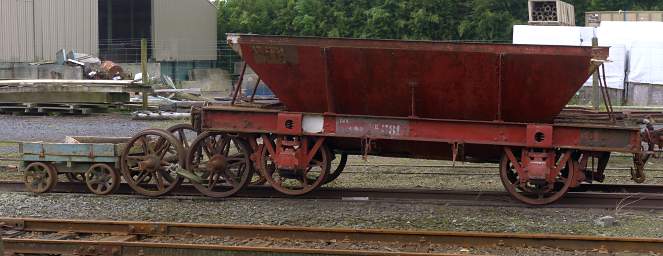
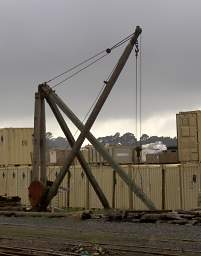
When we left Rotorua we were casting about for how to spend our last few days in New Zealand. The weather wasn't the best, and we were missing the rugged topography of the South Island. We had been looking for another bike trail to ride, and finally found one which seemed about right. It is called the Hauraki Rail Trail and is about 80 km long; it's normally done in two or three days. But we weren't particularly keen on the middle portion of the ride, which was on a regular highway. We decided to do just one leg of the ride, from the town of Waihi along the Ohinemuri River through the Karangahaki Gorge.
We arrived in Waihi in late afternoon. The first thing we did was find a bike shop to see if we could rent bikes and to find out more about the trail itself. We stopped in at Waihi Sports and Cycles and they were great. In addition to telling us about the trail, bikes they had for rent and how to find the trail, they pointed us to a great campsite Waihi Motor Camp which was on a hill behind town. It was quiet and convenient.
When we arrived at the bike shop in the morning we started by renting a tandem bicycle. I thought it would be fun to ride together; we had had a tandem when I was growing up. But after starting down the road on it we discovered that we weren't a particularly good team. To put it politely. It was all we could do to stay upright, and turning, stopping and starting were a real adventure. We decided it might be wiser to use individual bikes, so we took the tandem back and exchanged it.
Once we each had our own bikes we were off in a much better frame of mind. We headed down the street and past some old mining / railroad equipment and in short order were on the trail.
 |
 |
| Dump Cart | Loading Crane |
When you first head onto the trail there is a steep downhill with a sharp 90° turn at the bottom; the bike shop warned us to go really slow down the hill, and it was a good thing.
Once on the trail we were in a bucholic country setting, complete with black swans on the river.
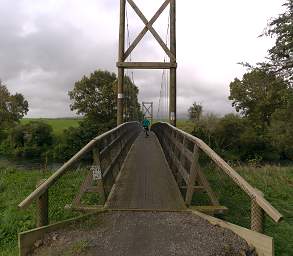 |
| Bridge |
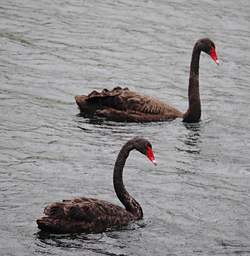 |
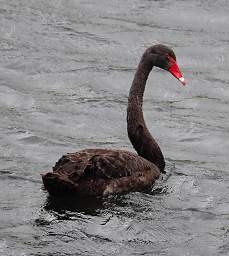 |
| Black Swan (Cygnus Atratus)
|
|
Dona said she saw a kingfisher right after crossing the bridge, but s/he seemed to have flown off for good. Pooey.
The trail followed the river the whole way for the part we did. It was really pretty and quiet, in spite of the highway being just across the river for much of it. The highway was mostly out of view. The river looked like it might be pretty good trout fishing.
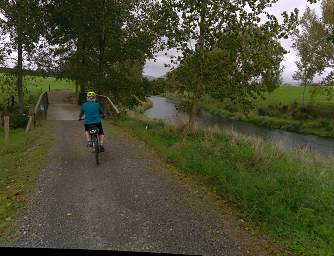 |
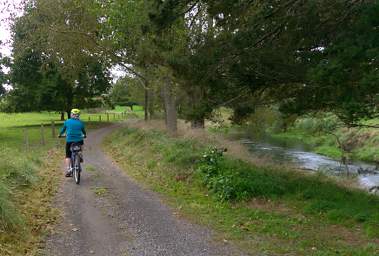 |
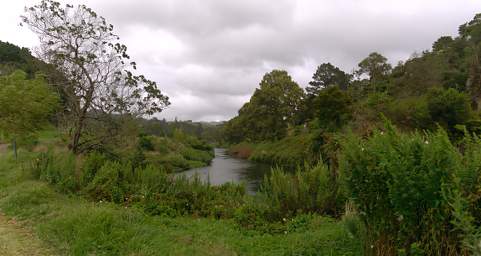 |
|
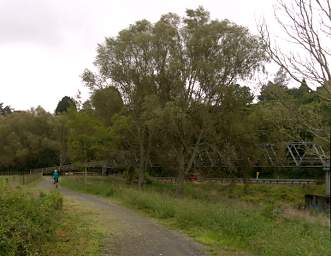 |
| Waikino Bridge |
About 8 km down the trail we came to Victoria Battery, the remains of what was once New Zealand's largest industrial complex. It processed gold-bearing ore, primarily from the Martha Mine in the town of Waihi, where we started our ride. The battery was a stamp mill — a rock-crusher. Victoria battery had 200 of these; when operating the sound could be heard 10 km away and the ground must have shaken ominously. The battery was the largest quartz ore-crushing plant in Australasia. Once crushed to a fine sand, the ore was soaked in large tanks of cyanide to extract the gold.
The concrete arches in the lower right of the picture below supported huge 15m tall steel tanks containing the potassium cyanide solution used to extract gold from the rock crushed in the stamp mill.
 |
| Victoria Battery |
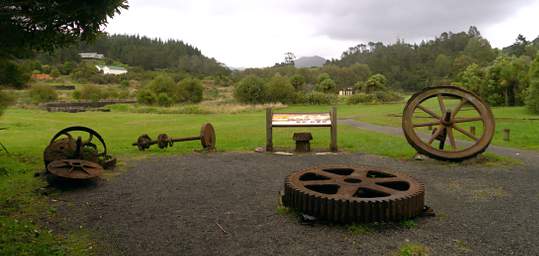 |
| Stamp Mill Gears |
There were other interesting things on the site, such as this cow-catcher from a train locomotive.
 |
| Cowcatcher |
 |
| Leaving Victoria Battery |
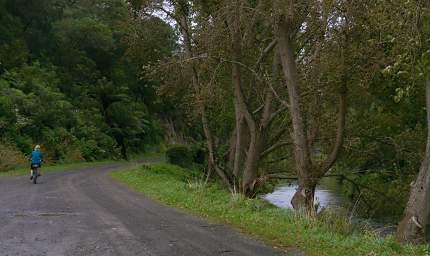 |
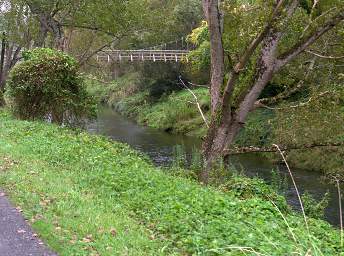 |
After more pleasant riding along the river we approached Karangahakie Gorge. There was a sign on the trail warning cyclists to dismount. The trail goes down a steep incline, and at the bottom transitions to a wooden walkway and then a narrow trail cut into the side of a cliff. One is wise to dismount; a slight mis-steering requiring a minor correction could easily result in a bump on the adjacent wall and the result of that could easily be a spill over the side onto the rocks or into the river, depending on the water level.
 |
 |
| Dismount Start | Karangahake Gorge |
 |
| Karangahake Gorge |
 |
 |
 |
After the gorge we came to the Talisman and Woodstock Mining Complexes where we crossed a foot bridge over the Waitewheta River, a tributary of the Ohinemuri. The mining complex is on Karangahake Mountain; there are numerous trails around the mining complex and up the mountain. We continued on until we came to a bridge across the Ohinemuri River. This was our turn-around point; we crossed the river and almost immediately entered the old rail tunnel, a 1km long tunnel that cuts through a mountain and took us back upriver past the mining complex.
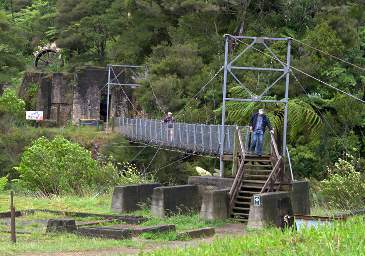 |
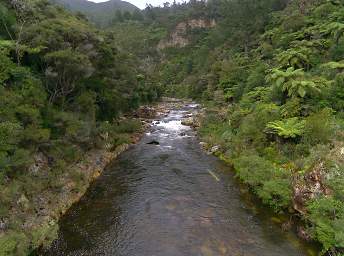 |
| Bridge over the Waitawheta River | Waitawheta River |
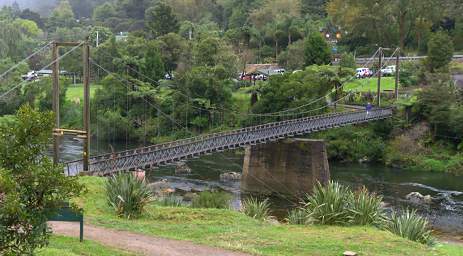 |
 |
| Bridge across Ohinemuri River to Visitor Info Site | Bridge across River to Tunnel Entrance |
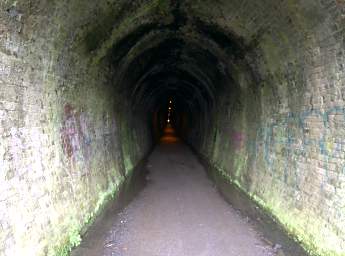 |
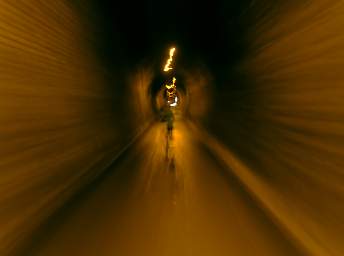 |
| Tunnel | Image Stabilization Doesn't Do Much Good
on a Bike in a Tunnel! |
At the end of the tunnel we crossed back over the river and returned up the trail the way we had come, stopping for lunch along the way.
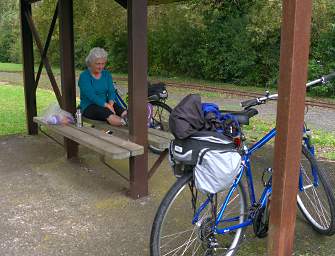 |
| Lunch Stop |
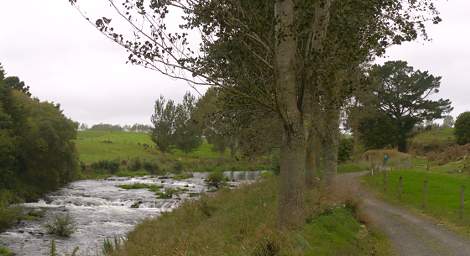 |
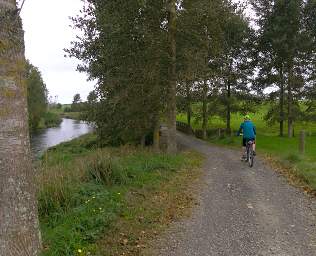 |
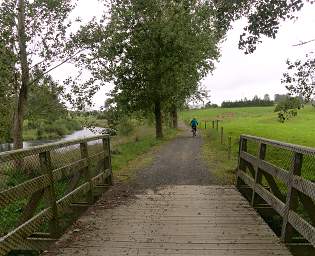 |
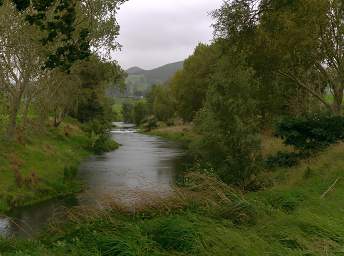 |
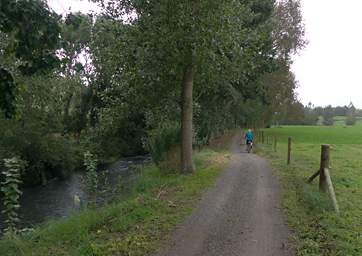 |
As we got back to near where we had started, we saw a couple more Kingfishers. We had not brought the telephoto lens with us, so I buzzed on ahead and fetched it out of the car. Then I waited for Dona at the last bridge, and we found three of them hanging out there. We couldn't get real close to them, but with the long (300mm, micro 4/3 format) lens it was close enough to get a bit of a photo.
 |
 |
 |
|
| New Zealand Kingfisher (Kōtare) (Halcyon Sancta Vagans)
|
|||
As we were heading back to the bike shop we passed through the train yard and its old equipment, and over some speed-bumps we had to watch on the way out. This time there was a warning sign, if you knew what it meant. When I was growing up we called them "Thank you Mam's" but I guess in New Zealand they're "Judder Bars".
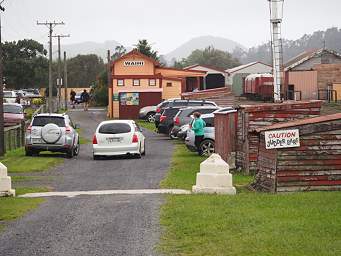 |
 |
| Judder Bars | |
From Waihi we wandered up to Wellington under grey, rainy skies. Then it was a long plane ride back home. All in all, a great trip! We wouldn't want to do it with any less time; and we would love to do it again with more.